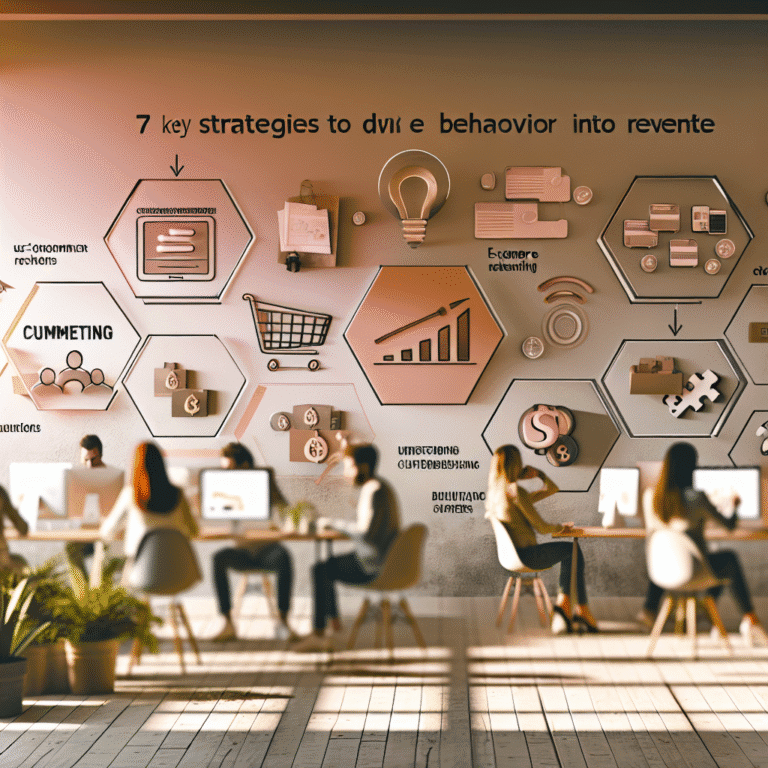Start Winning with Your Ecommerce Strategy
Ecommerce's got more graveyards than your local churchyard—full of ideas based on nothing but gut feelings and wishful thinking. Sure, it's fun in a brainstorm, but it's a bit naff for your wallet. If you're still tweaking button colours and betting everything on A/B tests fuelled by hope, it's time to get serious.
Honestly, we're not here for hunches. Our job is to get things right, and we need to be quick about it. Especially when your numbers are bouncing around like a toddler on a sugar high.
So what's the answer? Go data-driven. Find insights that will actually move the needle. It's about conversions, not how many likes you've got on your cat's Instagram.
What Being Data-Driven Really Means
Being data-driven isn’t about drowning in reports. You’ve got to turn signals into actions while your competition is still working out what the signal was. It’s not about hoarding vanity metrics like a collector in a glorified spreadsheet museum. It’s about what actually matters:
- Chuck out the vanity metrics. A bazillion visitors mean sweet nuffink if none of them buy. Good leads are better than fancy numbers.
- Focus on metrics that make money: conversion rates, CAC, lifetime value, and average order value. If it doesn't affect the bottom line, it’s just CEO infotainment.
- Don't mistake noise for insight. Too many tools just lead to analysis causes paralysis. Data without action is clutter basking under a blue light.
Think about it: would you put your R&D budget on the insights you’re using right now? If not, hold that bet.
Goals Before Optimisations
Running a campaign without a proper goal is like setting your sat nav for "somewhere" and expecting to get home. Spoiler: you won't.
Here’s your guiding star:
- Set one big goal per campaign. Is it purchases, signups, or trial subscriptions? Pick one and watch it work its magic.
- Break it down into smaller steps—email sign-ups, product views, and cart additions. Track them all to the bitter end.
- Don't tug of war your KPIs. Optimising for everything means you won't optimise for anything.
Going for click-through rates when you need conversions is rearranging deck chairs while your Shopify ship drifts off-course.
Smarter Decisions with a Lean Analytics Stack
Ecommerce brands collect tools like toddlers with stickers. But novelty doesn’t mean it’s useful.
Keep your strategy simple:
Essential Tools
- Google Analytics 4 for finding out where shoppers get stuck.
- Heatmapping tools like Hotjar to see real-time mistakes.
- Attribution platforms that tell you which customers come from where.
Nice-to-Haves, If You’re Ready
- Customer Data Platforms for those who know their stuff. A nightmare for those who don’t.
- Post-Purchase Surveys to get the horse's mouth version of why they bought.
Case study, anyone? A lifestyle brand fell hard for Meta ads. Surprise! It was TikTok traffic that converted 27% better. They made the switch, watched ROAS go up 26%. That's what clarity gets you.
Metrics That Matter for Ecommerce
Dashboard clutter is the enemy. Keep it lean:
- Conversion Rate: If no one's buying, the rest doesn’t matter.
- Customer Acquisition Cost: Spending more than you earn? That's not sustainable.
- Lifetime Value: This guides your ad spend.
- Average Order Value: Small changes mean big results.
- Revenue Per Visitor: The sweet spot of conversion and value.
- Cart Abandonment Rate: Fix your checkout or kiss profit goodbye.
- Product Page Bounce Rate: Pretty doesn’t count if no one buys.
- Time to First Purchase: Faster buyers stick around.
- Repeat Purchase Rate: Regulars beat new visitors every day.
- Attribution Breakdown: Find the channel that means business, not just clicks.
The rest? Not worth your time.
Test Smart, Not Pretty
Testing without understanding the behaviour is just guessing with fancy fonts. If you're debating button colours without data, you're doing it wrong.
Start here:
- Identify friction first, like hesitation or confusion.
- Segment by intent, not device. Newbies need different treatment from returning customers.
- Focus on clarity over cleverness.
If it seems like a design whim, it probably is. Stick to persuasion, not beauty.
Make Your Decisions from Data
Using data for decisions isn't just about backing up your gut feeling. Step back; let facts be your guide.
- Weekly reviews with teeth: Cut the duds, keep the ones that hit home.
- Keep dashboards simple. If it takes more than a breath to explain, bin it.
- Value speed and imperfect solutions. Test, learn, iterate.
Remember: knowing what not to do is ferociously strategic. Don’t let your data sit there growing stale.
Final Thought
Metrics have a story and a pulse, each with its plot twist. The best ecommerce strategies aren’t about getting lost in the numbers but understanding the behaviour. The key question?
What’s making someone hesitate? Get rid of that. Before you know it, they’ll hit “Add to Cart” from instinct, and you'll know exactly why everything clicked into place.





